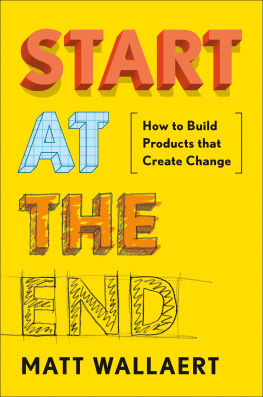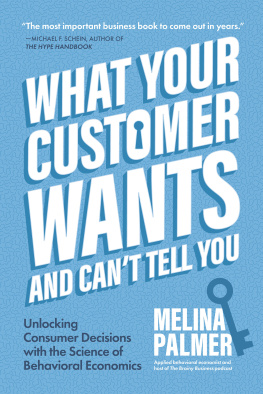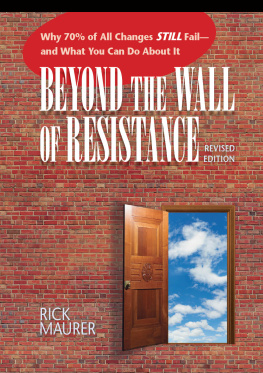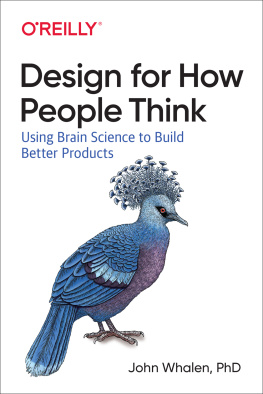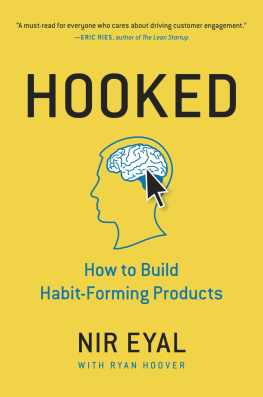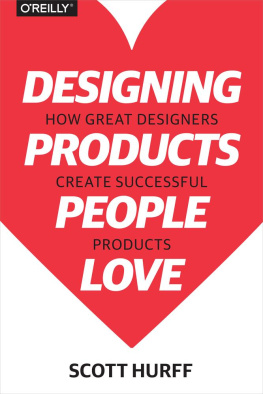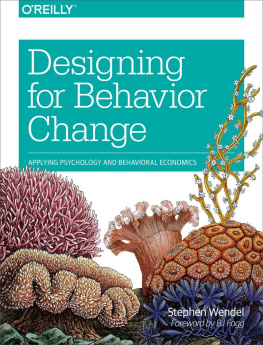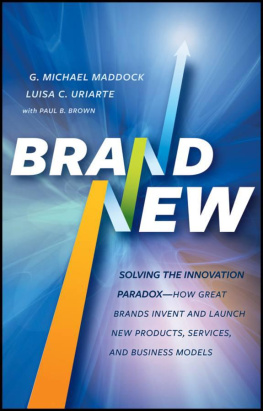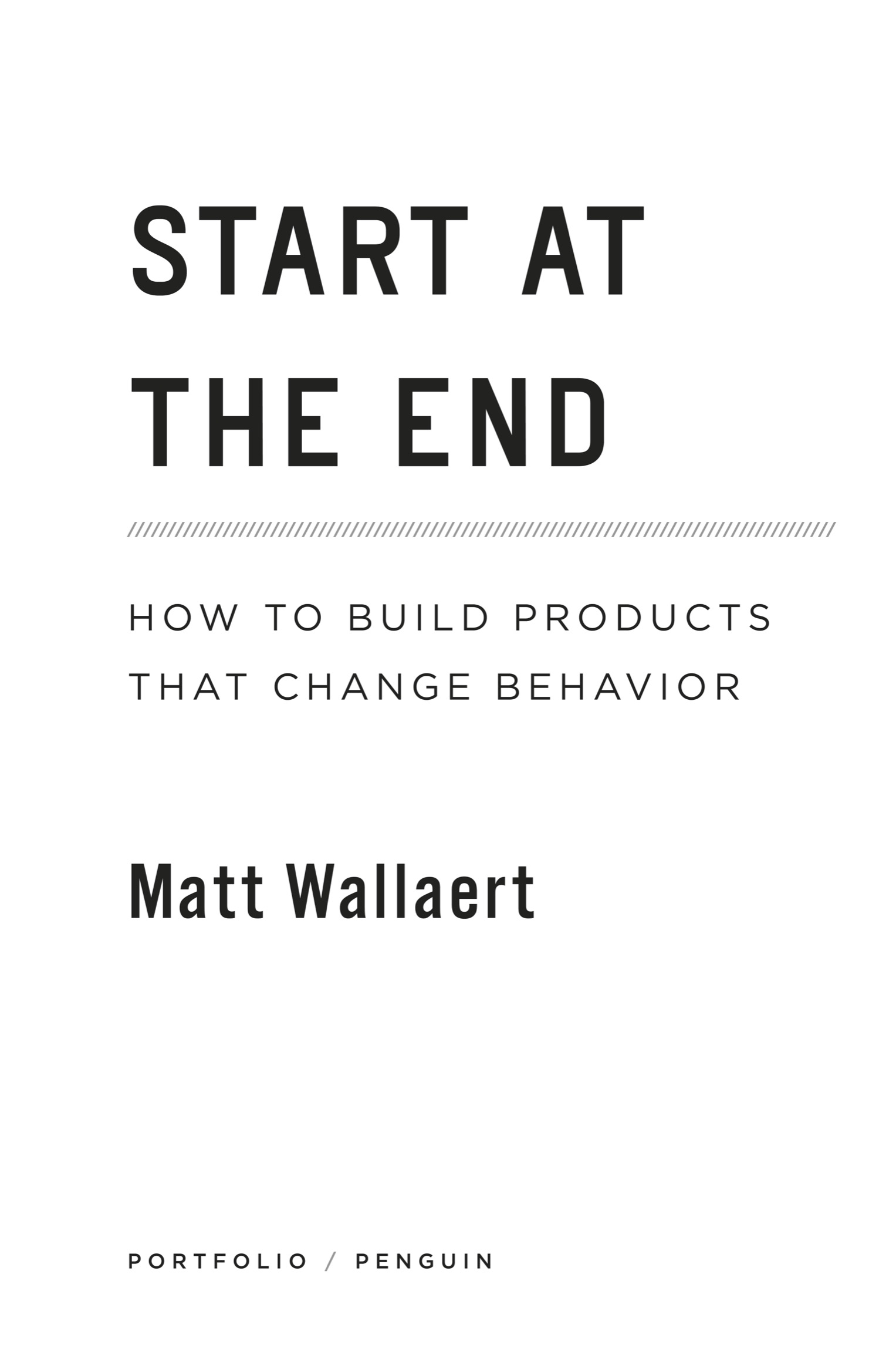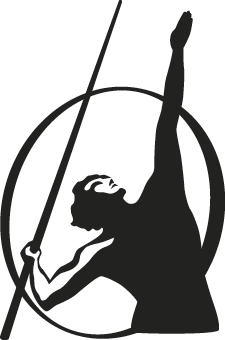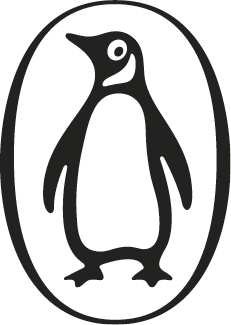Penguin supports copyright. Copyright fuels creativity, encourages diverse voices, promotes free speech, and creates a vibrant culture. Thank you for buying an authorized edition of this book and for complying with copyright laws by not reproducing, scanning, or distributing any part of it in any form without permission. You are supporting writers and allowing Penguin to continue to publish books for every reader.
Far and away the best prize that life has to offer is the chance to work hard at work worth doing.
ACKNOWLEDGMENTS
Nothing in this book is entirely original. The content relies on a long history of studies done by researchers in social psychology and other sciences, and on the experiences of hundreds of talented people in organizations that span the globe. That Ive added some structure and process to make their research and experience easier to apply is just another small contribution in a line of small contributions that have led and will lead to a better world.
The point of the book is to help you add your own contribution. Remember, there have been a few giants, but it is mostly iteration that has gotten us this far. I dont believe that behavior-change practices should be kept in proprietary silos, deployed only by a dark cabal of consultants. The world gets better when we collectively get better at making it that way.
I started my career in product development in the late 2000s, after leaving grad school to own product at Thrive, a personal finance startup that we eventually sold to Lending Tree. But the real seeds of the process Ill lay out here started long before I was born, with Kurt Lewin and his work on field theory (which Ive turned vertically and called competing pressures). His work was so long in the tooth that we didnt read it when I was in school, but Andrew Ward (my undergraduate adviser at Swarthmore, along with Barry Schwartz) did, and he gave me a MacDonald paper that was really the catalyst for my continued work on behavior change. The authors started, as so many good scientists do, with a brain teaser: is there a set of conditions in which a drunk person would be more likely to have safe sex than a sober person?
The answer turned out to be a hand stamp that said AIDS Kills. Because alcohol limits brain function, drunk people tend to focus on the most obvious things in their environment. And when one of those is a scary message about AIDS, they report a greater desire to have safe sex than sober people do. The stamp is a pressuresomething that causes behavior to be more or less likely. MacDonalds paper inspired Ward and his frequent collaborator Traci Mann to posit a more generalized model of attentional myopia. Students were asked to use the lighter when they wanted to smoke, but some of them had an additional task of counting backward by tens. The students whose brains were distracted by counting smoked less, because their overall attention became myopicthey were disproportionately affected by the warning sticker on the lighter.
That was the seed for me. If narrowing attention could change the strength of pressures and thus change behavior, there must be other ways to modify those pressures. With conscious intent and deliberate outcome, pressures could be designed for and their effects altered to create a different world. That seed became this book.
If this book is a startup, that is the founding story. It is also the most research papers youll see cited in a single section for the rest of this book; Ill try to stick with practical examples over lab studies whenever possible. But I do want to acknowledge the work of a few people before abandoning citation.
I would never have become a social psychologist if not for Andrew Ward and Barry Schwartz, who managed to see past the arrogance of youth to the curiosity that frequently lies underneath. Stef Sugar, continues to put up with the more advanced arrogance of my middle age. My parents and brother just put up with me, period. Graham Moore showed me what it is to write a book. Avi Karnani took a bet on me at Thrive and again with Churnless, and well eventually find an excuse to do it again. Stefan Weitz and Adam Sohn brought me to Microsoft; Ill work for Anna Roth anytime. Dan Storms has talked about product with me way, way too much. Adam Grant was the first person to ever put me in a book and constantly reminds me about my gender blind spot. Jennifer Kurdyla wrote this down. The list goes on, but it would not be complete without my editor at Penguin, Merry Sun, who was the only publisher ever to talk me into agreeing to write this down. Many tried and failed (another publisher asked me to stop giving free talks and only agree to speak if organizers guaranteed a certain number of books sold; welcome to modern publishing); she succeeded by being direct, honest, and clear that I didnt have to do anything but write the book I wanted to write.
But above all others, it is my son, Bear, who catalyzed my writing. I simply couldnt keep leaving him to explain it in talk after talk after talk around the world. When this is published, I will have the supreme pleasure of turning down speaking requests by saying, Im playing with my son; go read the book. I look forward to this, and my greatest pleasure is knowing that he does too.
INTRODUCTION
Humans are born behavioral scientists. From our very first cry, we begin to shape what others do by exerting pressurebawl and they feed us, coo and they snuggle us. And we are similarly shaped by the pressures of others. Were taught how to speak, dress, and act both explicitly and implicitly, through millions of subtle interactions with people and our environment. We change the behavior of others naturally and constantly, simply by being alive and part of a larger population.
This natural tendency toward behavior change manifests as our creative drive. Because were wired to influence what others do, were constantly creating to get what we want. As a consequence, nearly everything we come in contact with is constructed to shape behavior. Sidewalks tell us to walk here and not there. Movies tell us to laugh or to cry. Wearing a tie says, Call me Mr. Tibbs! while a Hawaiian shirt elicits a first name.
Yet we rarely connect our desire to create with the goal of behavior change. At most companies, the decision-making process behind what we build still looks like an episode of Mad Men: people, generally white and male and lacking any expertise other than privilege, throw ideas out until one of them sounds sexy enough, and thats what gets built. The rationalization is entirely post hoc, created simply to support an idea that a decision maker has already fallen in love with.

